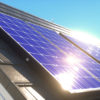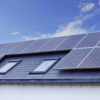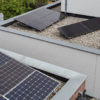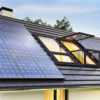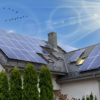The time has never been better to invest in a good quality solar power system. Not only are the prices competitive but there is an abundance of high-quality components and panels to choose from.
Even though solar power systems improve the lives of their customers, it’s not to say that homeowners themselves won’t have to get used to things.
For instance, if the grid goes down, you know it will be back up and running, but the same cannot be said for solar power systems. You will have to have your panels inspected and fixed yourself, that is if the installer you dealt with is still around and will return to fix issues.
Maintaining and repairing solar power systems can become very time consuming and frustrating if you don’t take several steps. But, for argument’s sake let’s say the worst happens, what might your options be? Here’s a list of things to try.
Signs of a Bad Solar Installation
Before your power output and savings take a hit, your solar panel will begin to show some signs you should definitely look out for.
Erratic power production: Solar panels will never produce electricity at a constant rate. Drops in power output are to be expected during cloudy days, nights and in shade.
However, if you witness too much fluctuation, something is definitely amiss. It could mean the panels are not working properly, or, the installer didn’t wire them right, or the inverter is broken.
Browning, yellowing on the panels: Solar panel discoloration occurs when Ethyl Vinyl Acetate (EVA), which is used to encapsulate the solar cells begins to disintegrate and is common on poor quality solar.
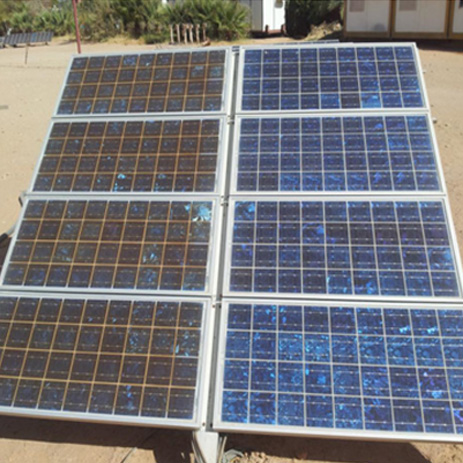
The jury’s still out on whether this actually causes performance loss or not, but a study in 1991 found that EVA discoloration caused a reduction in power output by 9%-50%. So, do take note of your solar panel’s appearance if they appear to be changing shades.
Additionally, heat damage can also cause solar panels to change in color. Usually, heat damage results in burn marks that look like someone took a magnifying glass and focused it on your panels.
Panels are in shade: Speaking of shade, if you see your panels being blocked, then it’s time to call in help. Solar Designers and installers do take trees and adjacent buildings into account.
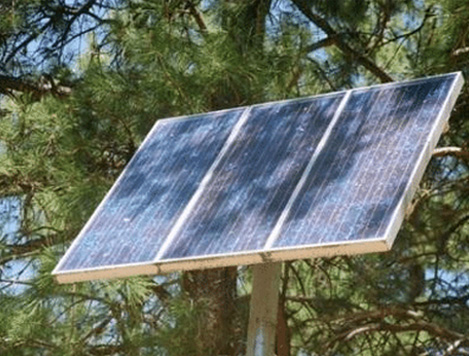
But even the best installers cannot predict what might happen down the road. Trees may be planted around your house, or new buildings may come up too. At bidmysolar we can model these possibilities in advance.
Exposed wires: Good solar installers always ensure that all wiring is properly connected and covered, especially on the roof. Exposed wiring can corrode or break leading to loss of output.
What Do You Do When The Worst Happens
Fortunately, most solar installations can be fixed by a qualified electrician or installer and will be potentially costly, however, the solution itself will depend on the nature of the problem. There are a few things you can do if push comes to shove.
Document the problem: Start by recording the issue itself. If it’s a power fluctuation, then note down the time they are occurring. If you see panel discoloration, exposed wiring, rusting, parts breakage, then take pictures.
Check your item warranties: During your inspection, hopefully nothing major would be broken or out of place. But, if your panels or inverter seems to be the culprit, then take note of their warranty. Typical inverter and panel warranties are 10 years in length but can be longer in the case of premium panels. A word of warning, always be absolutely clear on what is warranted and what is not before you sign the sales agreement.
Contact your installer: Ok, so, we have a fair idea of the problem and that you can probably get it fixed or replaced provided the item is still in warranty.
At this point, you can take up the issue with your installer if you have a workmanship warranty agreement with them, which protects you from any installation related defects and this assumes they are still in business.
Have the defective pieces changed at your expense: Let’s say you’re unlucky and you find out that the manufacturer has long gone out of business (or never existed), and your installer couldn’t care less.
In this case, your only options are to either have the entire system removed or the damaged item(s) replaced at your expense. This really is a last-ditch effort, and unfortunately this happen a lot.
Your Best Bet is to be Prepared Going In
Obviously, having costly repairs and replacements is best avoided. The only way to make sure this doesn’t happen is to stay diligent right from the get go.
Warning! If you are paying a price for a system below market price and it is not quality equipment, well, you’re asking for trouble.
This means, only working with the best CEC accredited installers, ensuring all components are from reputable manufacturers, recently manufactured and have decent enforceable warranties, and running regular (every 24 months) maintenance on the solar power system.
While we always encourage our customers to stay abreast of the latest information on solar power (which is the objective of this blog), we can take the edge off your efforts.
With bidmysolar™ you can be rest assured that all solar power installations are only handled by the best installers. Our customer-first approach ensures your project is handled by leading installers in your area, which gives you the best bang for your buck.

